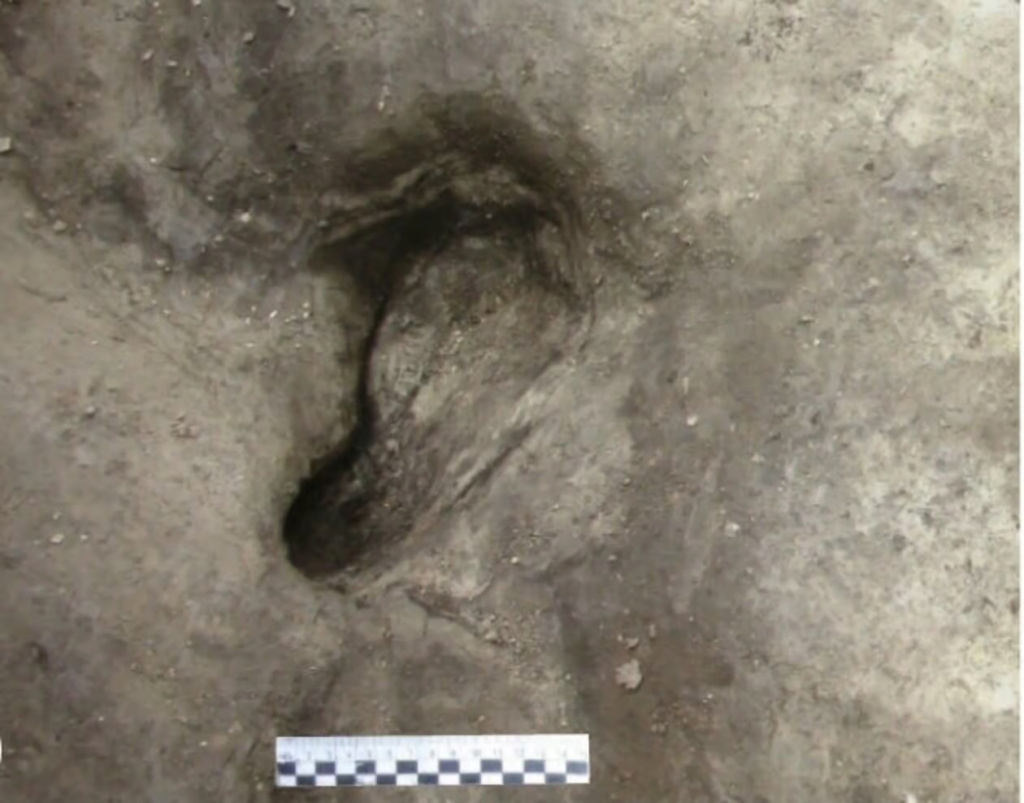Archaeology: discovery in Germany of ancient human footprints dated 300,000 years

Footprints Belonging to Homo heidelbergensis Discovered at Former Lignite Mining Site in Germany
Archaeologists from the University of Tübingen in Germany have just discovered 300,000-year-old footprints at the archaeological site of Schöningen. Likely belonging to Homo heidelbergensis, these tracks were surrounded by the paw prints of ancient large prehistoric mammals such as elephants and rhinos. The report of this discovery is published in Quaternary Science.
Oldest human footprints found in Germany
This fascinating study may have uncovered the oldest human footprints ever found in Germany and possibly all of Europe. They were discovered on the archaeological site of Schöningen in the state of Lower Saxony.

Located at the foot of the Elm, a chain of wooded hills, the surroundings of Schöningen have long been a place of surface lignite mining. But if this region is known to archaeologists, it is because it is home to an exceptional archaeological site dating from the Lower Palaeolithic, a prehistoric period which began between 3.3 million years ago or 2.8 million years ago, according to the authors. to end around 300,000 years ago and give way to the Middle Paleolithic.
In 2012, the same team of archaeologists discovered javelins named after the spears of Schöningen , as well as numerous animal bones belonging to elephants and rhinos, but also to horses and lions. The researchers also unearthed the remains of amphibians, reptiles as well as plant remains. The excellent condition of these archaeological discoveries is due to the lignite present in large quantities in the soils of this region of Germany. Lignite is a sedimentary rock made up of plant residue intermediate between coal and coal and formerly used as fuel.
The footprints just discovered at this archaeological site in Schöningen are believed to have been left by Homo heidelbergensis , a now extinct species or subspecies of archaic humans.
Footprints belonging to individuals who are part of a family

Replica of a skull that belonged to Homo heidelbergensis. Credit: Danny Ye/Shutterstock
It is the first time since the discovery of this archaeological site in 2008 by archaeologists from the German University of Tübingen that such a detailed study of fossilized footprints has been carried out. The study of these footprints combined with sedimentological, archaeological, paleontological and paleobotanical analyzes provides a comprehensive overview of the environment, animals and plants that occupied this region 300,000 years ago.

Among these human footprints discovered in an incredible state of preservation, three of them correspond to relatively young individuals, possibly children, accompanied by an adult individual. Paleontologists believe they have discovered the footprints of a family or at least a family unit. The researchers believe that these traces were left by individuals of the species Homo heidelbergensis busy picking, because if they had gone hunting, there would probably have been no children and no more adult individuals.
The researchers also confirm that 300,000 years ago, food plants such as fruits, young shoots, plants and mushrooms were available at certain times of the year in this region which today constitutes the land of Basse -Saxony and that this human species lived near a lake or near a river with shallow water. To affirm this, paleontologists rely on other Lower and Middle Pleistocene sites where hominin footprints have been discovered.

Traces of the largest land animal of the time
At this same archaeological site, paleontologists have discovered paw prints of ancient Palaeloxodon , a species of elephant that lived in this area 300,000 years ago. Also called European forest elephant or elephant with straight tusks, this animal lived in a large part of Eurasia in the middle and upper Pleistocene, that is to say over a long period stretching from 780,000 years to 30,000 years ago. Before our era. With a height of 4.20 meters, a length of 8 meters and a weight that could flirt with 15 tons for some adult males, it was the largest land mammal of the time. Paleontologists believe that this animal must have been part of the occasional prey hunted by Homo heidelbergensis and subsequent species.
The traces of these elephants discovered at the archaeological site of Schöningen reach a length of 55 centimeters, which suggests that large specimens passed through this place.
Paleontologists also unearthed a rhinoceros paw print that belonged to the species Stephanorhinus kirchbergensis or the species Stephanorhinus hemitoechus . Stephanorhinus was a genus of two-horned rhinoceros that lived in Eurasia and Africa from the Pliocene to the Late Pleistocene. The two species mentioned above were the only ones to occupy the temperate part of Eurasia and in particular the region corresponding to present-day Europe. Stephanorhinus kirchbergensis , called Merck's rhinoceros and Stephanorhinus hemitoechus or narrow-nosed rhinoceros persisted until the last ice age which ended 11,700 years ago.
Source :
Flavio Altamura, Jens Lehmann, Bárbara Rodríguez-Álvarez, Brigitte Urban, Thijs van Kolfschoten, Ivo Verheijen, Nicholas J. Conard, Jordi Serangeli, “Fossil footprints at the late Lower Paleolithic site of Schöningen (Germany): A new line of research to reconstruct animal and hominin paleoecology”, Quaternary Science Reviews , 2023, 108094, ISSN 0277-3791, https://doi.org/10.1016/j.quascirev.2023.108094

